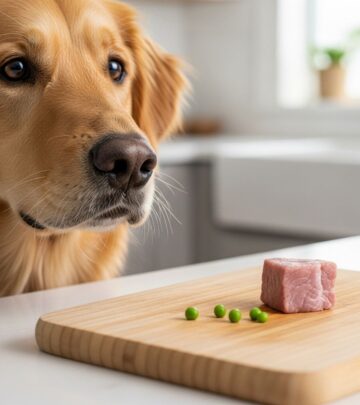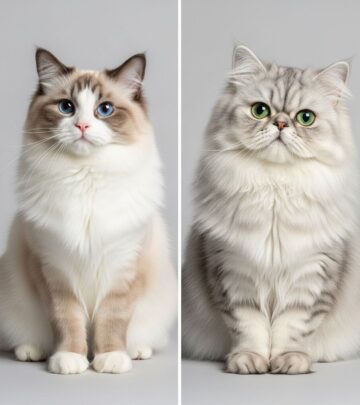Top Chicken Feeds for Healthy Flocks: Comprehensive Guide & Picks
Explore the best chicken feeds for vitality, egg production, and happy flocks, with expert tips for all levels of poultry keepers.

The 7 Best Chicken Feeds for Happy, Healthy Flocks
Choosing the right chicken feed is vital for backyard poultry keepers, hobbyists, and farmers alike. Optimal nutrition not only improves your flock’s health and vitality, but it also maximizes egg production, supports proper growth, and reduces waste. In this guide, we break down the top-rated chicken feeds available and discuss what makes each blend unique. You’ll find choices tailored for chicks, layers, organic enthusiasts, and more, along with practical buying advice and answers to the most common chicken feeding questions.
Best Chicken Feeds: Editor’s Picks
- Best Overall: Nutrena NatureWise Layer Feed
- Best Organic: New Country Organics Layer Feed
- Best for Chicks: Kalmbach Chickhouse Reserve
- Best High Protein: Nutrena NatureWise Meatbird Crumble
- Best Whole Grain: Kalmbach Henhouse Reserve Whole Grain
- Best Soy-Free: Nutrena NatureWise Hearty Hen Soy-Free
- Value Pick: Nutrena Country Feeds Layer
Why Nutrition Matters: Understanding Chicken Feed Basics
Poultry feed formulations are designed to provide the complete nutrition chickens need throughout their life stages. Feed quality directly influences health, productivity, feather quality, and resistance to disease. Key ingredients include proteins, carbohydrates, fats, vitamins, and minerals—each essential for specific growth or egg-laying needs. There are also specialized formulas for chicks, layers, meat birds, and breeders, so understanding the difference is crucial. The feed’s texture—pellet, crumble, mash, whole grain—can impact how easily chickens eat and how much gets wasted.
Chicken Feed Types: Textures & Suitability
| Feed Type | Description | Best For | Pros | Cons |
|---|---|---|---|---|
| Mash | Finely ground, soft feed; can be fed dry or mixed with water as a porridge. | Chicks and all ages; best for early growth. | Digestible, easy to eat for small beaks. | Can cause more waste due to fine texture. |
| Crumble | Coarser texture than mash, smaller pieces (broken pellets). | Young birds; transitional feed from mash to pellets. | Easy to eat, less waste than mash. | Still prone to small amounts of waste. |
| Pellet | Compact cylinders; nutritionally uniform, processed. | Adults, layers, meat birds. | Minimizes waste, easy storage. | Some birds dislike pellet texture initially. |
| Whole Grain | Unprocessed grain mixture, visible ingredients. | Naturally foraging birds; enrichment. | Encourages natural pecking, visually appealing. | May lack complete nutrients unless mixed properly. |
Top Chicken Feed Brands and Their Blends: Detailed Review
1. Nutrena NatureWise Layer Feed
Best Overall for backyard flocks and small farms. Features a balanced formula with 16–18% protein, fortified with calcium for eggshell strength and added probiotics for digestive health. Available in pellet and crumble texture for layers of all sizes. Made with natural ingredients and minimal fillers, NatureWise is widely recommended for improving egg quality and flock vitality.
Key nutrient content: 16%–18% protein, calcium, vitamins D3 & A, omega-3 fatty acids.
- Uniform nutrition in every bite
- Supports egg-laying performance
- Easy transition from starter feeds
- Available in 40lb bags for convenience
2. New Country Organics Layer Feed
Best Organic Choice for sustainable poultry keepers. This USDA-certified organic blend avoids GMO grains, soy, and cheap fillers like corn. With 17% protein, it derives nutrition from peas, barley, and sunflower seeds. It is ideal for organic farms and those seeking a cleaner, more wholesome diet for layers. Notable for its natural vitamins, minerals, and consistent quality.
- 100% USDA Organic certified
- Non-GMO, soy-free, corn-free
- Promotes sustainable farming practices
- Enhanced flock immunity with added probiotics
3. Kalmbach Chickhouse Reserve Whole Grain Complete Feed
Best for Chicks — Formulated with 18% protein to support rapid growth and feather development. The whole grain mix offers visible grains and balanced nutrients, appealing to natural foraging instincts. Perfect for the first 8 weeks, available in convenient crumble form for small beaks.
- High protein for chick development
- No artificial dyes or preservatives
- Balanced vitamins and minerals
- Supports transition to grower feeds
4. Nutrena NatureWise Meatbird Crumble
Best for Meat Birds — A powerful 22% protein feed designed to rapidly grow broilers and meat birds. Available as a crumble for easy consumption and digestion, it boosts muscle development while maintaining digestive health. Often chosen for optimal feed conversion and performance.
- Maximum weight and muscle gain
- Formulated for fast-growing birds
- Vitamins and minerals for immunity
- Reduces feed waste in crumbled form
5. Kalmbach Henhouse Reserve 17% Whole Grain
Best Whole Grain Blend — Popular among flock owners who prefer a more natural, visually appealing feed. Composed of quality grains and balanced for layers, with a protein level of 17%. Encourages pecking and provides varied nutrition.
- Visible, non-processed grains
- Natural enrichment and entertainment
- Supports egg production and feather health
- Lower filler content than standard blends
6. Nutrena NatureWise Hearty Hen Soy-Free
Best Soy-Free Choice for allergy-prone birds or owners seeking alternative proteins. Contains 18% protein from non-soy sources, with added omega-3 for eggs and balanced minerals. Ideal for sustainable flocks.
- Completely soy-free formulation
- Boosted omega-3 for healthy eggs
- Natural vitamins for robust immunity
- Suitable for heritage breeds
7. Nutrena Country Feeds Layer
Value Pick — Budget-friendly without sacrificing quality. Delivers 16% protein and is available in pellet and crumble versions. Contains essential minerals and vitamins for reliable laying performance and healthy feathers.
- Economical option for large flocks
- Consistent quality, minimal filler
- Supports egg-laying and general health
How to Choose the Right Feed for Your Chickens
There are several factors to consider when selecting chicken feed. Flock age, breed, purpose (egg-laying, meat, ornamental), organic preference, and budget all play a part. Feed labels offer helpful guidance:
- Starter/Chick Feed: Highest protein (18–20%), finely ground for tiny beaks; crucial for the first 8 weeks.
- Grower Feed: Intermediate protein (16–18%), lower calcium; supports healthy growth before egg-laying.
- Layer Feed: Moderate protein (16–18%), elevated calcium (for eggshell strength); ideal for hens from 18 weeks onward.
- Meat Bird Feed: High protein (20–22%) for broilers’ rapid muscle gain.
- All-Flock/Multi-Purpose Feed: Balanced for mixed age and breed flocks, often used when roosters and non-laying birds share the coop.
Key Ingredients to Avoid: Fillers & Additives
Many commercial chicken feeds contain fillers (corn, soy, animal by-products) used to bulk up the blend cheaply. While corn delivers energy, it’s less nutrient-dense; soy, an incomplete protein source, is harder to digest and less sustainable. Most fillers are derived from GMO crops, raising concerns about pesticides and herbicides. Opt for blends that focus on non-GMO grains, alternative proteins (such as peas and sunflower seeds), and added vitamins from natural sources. Avoid feeds with artificial colors, preservatives, or chemical medication unless absolutely needed for chick health.
- Look for transparent labeling of ingredients
- Prefer certified organic or non-GMO blends
- Check for real sources of protein, not by-products
- Consider supplementation for vitamin D3, omega-3, and trace minerals if not listed
Other Feeding Options
- Fermented Feed: Soaking whole grains or mash increases nutritional uptake, supports gut health, and reduces waste.
- Medicated Feed: Contains coccidiostats to prevent coccidiosis in chicks; only use if chicks are not vaccinated.
- Mixed Feeds: Blend different textures and ingredients for variety, especially useful for picky eaters.
- DIY Feed: Owners can mix their own feed for full ingredient control, but must carefully monitor nutrition.
Chicken Feeding Tips & Best Practices
- Always provide fresh, clean feed daily and protect it from moisture.
- Use feeders that minimize waste – pellet feeders reduce spillage the most.
- Supplement with grit if birds are fed whole grains or forage freely.
- Provide oyster shell or calcium supplement for laying hens.
- Ensure constant access to clean water, as hydrated birds process feed more efficiently.
Frequently Asked Questions (FAQs)
Q: What is the healthiest chicken feed overall?
The healthiest feed is a balanced, nutrient-dense blend with minimal fillers, fresh ingredients, and added natural vitamins; organic, soy-free formulas are ideal for many flocks.
Q: Should I choose pellets, crumbles, or mash?
Pellets are best for adults to minimize waste, while mash is suited for young chicks and crumbles work well for growing birds and layers with delicate beaks.
Q: Do chickens need organic feed?
Organic feed is not strictly necessary but ensures no GMO, synthetic pesticides, or fillers; it is preferred for sustainable and health-focused poultry keeping.
Q: Can I mix different types of chicken feed?
Yes, mixing mash, pellets, and whole grains can increase variety and reduce picky eating, but ensure overall nutrition remains balanced.
Q: How often should I feed my chickens?
Chickens should have constant access to feed to support foraging instincts. Remove leftover feed daily to prevent spoilage and contamination.
Q: Is it safe to supplement with kitchen scraps?
Many vegetables, fruits, grains, and cooked pasta are safe; avoid excessive salt, sugar, chocolate, and spoiled foods. Supplements should never replace complete feeds.
Q: What role does grit play in poultry diets?
Grit helps chickens grind up whole grains in their gizzards, aiding digestion and nutrient absorption. If chickens only eat commercial feed, grit is less critical.
Chicken Feeding Mistakes to Avoid
- Buying feed with high percentages of filler and low protein
- Feeding chicks layer feed (too much calcium can harm young birds)
- Switching feed abruptly without a transition period
- Over-relying on kitchen scraps or foraged foods
- Ignoring breed-specific needs for protein, calcium, and texture
- Allowing feed to spoil; always use airtight containers in humid climates
Conclusion: Building a Healthy, Productive Flock
Investing in high-quality chicken feed tailored to your flock’s age, breed, and purpose will ensure robust health, reliable egg laying, and vibrant plumage. Avoid filler-heavy, artificially colored feeds and seek out reputable brands with transparent labeling and a commitment to non-GMO, natural ingredients. When in doubt, consult poultry nutrition experts, local feed stores, and online poultry communities to share experiences and discover new blends. With thoughtful feeding, your chickens will thrive and reward you with nutritious eggs, steady growth, and lively personalities.
Read full bio of Sneha Tete












